Convolution reverb is one of the most versatile types of the reverberation effect. Essential to modern sound design and music production, reverberation has been utilized by engineers since the beginning of recorded sound. Conceived by audio legend Bill Putnam Sr., piping a signal from the control room to another space outfitted with speakers, re-recording that signal interacting with the environment, and finally blending that signal in with the rest of the mix later became common in the “chambers” found within studios such as Abbey Road, Capitol, and more.
For studios without that luxury, mechanical plate reverberators like the EMT 140 caught on, offering a lush sound in a smaller package. Eventually, algorithmic hardware reverb units like the EMT 250 or AMS RMX 16 helped engineers craft the spaces of their recordings, leaving an even smaller physical footprint. As digital audio evolved, these algorithms were ported into plugins, readily available (and with multiple instances) within an engineer’s DAW of choice. Let’s not forget spring reverb tanks, which have been found within Hammond Organs dating all the way back to the 1930s, guitar amps made by Fender (like the Vibroverb), as well as dedicated spring reverb hardware units.
Love the lush reverb sounds heard on records by The Beatles and Pink Floyd? Thank this damp and filthy room.
One particular type of reverb, based on a process called convolution, has perhaps flown under the radar, so let’s have a look at the history of the effect, before I introduce my favorite convolution reverb plugins. Important to note that this process can be used to capture far more than simply the sound of a room, for example, amps and speaker cabinets, but this article is going to focus on convolution reverbs.
Released in 1999, the Sony DRE S777 hardware reverb unit harnessed convolution to generate acoustic signatures of actual physical spaces. These “sampled reverbs” were stored on CD-ROMs, and allowed engineers to place sources inside natural-sounding spaces with relative ease. The CD-ROM that came packaged with the DRE S777 featured concert halls, and churches, as well as a digitally simulated plate reverb. It was a big deal at the time and served as a worthy predecessor for all of the below-mentioned plugins that use the process of convolution.
The Sony DRE S777, which you can buy on reverb.com for nearly $6,000. Or you could just buy every reverb plugin ever. Up to you.
WHAT IS CONVOLUTION?
Convolution reverb comprises two primary elements: the input signal, denoting the audio content, and the impulse response (IR). Familiarity with the term “impulse response” is essential in comprehending the convolution reverb process.
The reverb is initially captured through the recording of a sound within a specific acoustic environment, such as a clap, starter pistol, balloon pop, or a sine sweep. This sonic event can be dissected into two components: the initial sound or “impulse” and the subsequent reverberations, termed the “response.” This recurring emphasis on impulse response is noteworthy if you want to understand the process.
Each impulse response within a convolution reverb encapsulates an audio representation of the inherent acoustics of a given space. For this reason, I’d argue that sine sweeps sound more true to life, as the resulting IR will replicate how an acoustic environment reacts to the full frequency spectrum. Conceptually, one may liken the impulse response to a sophisticated form of a “preset,” considering that a recorded impulse response in a plugin essentially functions as a preset.
The pre-recorded audio, manifested as an IR file, is integrated into the convolution reverb plugin and subsequently applied to the user’s audio. This instigates a computational process wherein the plugin “convolves” the reverb with the audio content, effecting a seamless amalgamation of the two sounds. Notably, convolution involves an intricate mathematical procedure facilitating the transference of certain sonic characteristics from one signal to another.
Simply put, convolution reverbs are versatile, natural sounding, and can help users transport their recordings to nearly any physical space. The controls found on most convolution reverb plugins aren’t much different than the ones found on other reverberators, so I’ll list and define these parameters. Beneath that are some of my favorite convolution reverb plugins, and how I utilize them when working in both music and post-production.
COMMON REVERB PARAMETERS
- Pre-Delay: The time delay between the direct sound and the onset of the reverberation. It allows for a brief period before the reflections begin, influencing the perceived distance and size of the virtual space.
- Early Reflections: The initial reflections of sound that arrive shortly after the direct sound, typically within the first 50 milliseconds. Early reflections contribute to the perception of the room’s characteristics and play a crucial role in creating a realistic sense of space.
- Late Reflections: The subsequent reflections that occur after the early reflections, extending beyond the initial milliseconds. Late reflections contribute to the decay and sustained reverberation, shaping the overall ambient quality of the virtual space.
- Dry/Wet Blend: A parameter that controls the balance between the dry (original) signal and the wet (reverberated) signal. Users can adjust the mix to achieve the desired level of reverb in the final output, providing flexibility in tailoring the sound.
- Modulation (Mod): The introduction of subtle variations in the reverb characteristics over time. Modulation can involve changes in parameters such as pitch, delay time, or filter settings, adding a sense of movement or richness to the reverberation.
- Pre-EQ: Equalization applied to the input signal before it undergoes the reverberation process. Pre-EQ allows users to shape the tonal characteristics of the original sound before it interacts with the virtual space, influencing how the reverb tail is colored.
- Post-EQ: Equalization applied to the reverberated signal after the reverb process. Post-EQ enables users to shape the tonal characteristics of the reverberation, allowing for further refinement and adjustment of the final sound.
1. Ableton Convolution Reverb Pro
Ableton’s Convolution Reverb Pro provides an extensive array of customization options, including EQ, damping, modulation, and more. The reverse function in Convolution Reverb Pro is particularly noteworthy for creating otherworldly reverb textures. With these controls, users can transform an original Impulse Response (IR) into something new, and of course, save their own presets.
Moreover, Convolution Reverb Pro offers the flexibility to blend two IRs—one for early reflections and another for late reflections—resulting in a hybrid sound incorporating elements from diverse acoustic spaces. The software goes beyond traditional reverb applications, featuring a utility for crafting personalized reverb spaces. The IR Measurement Tool simplifies the creation of IRs, enabling users to capture a sample using their hardware or by effortlessly importing an audio file into the Convolution Reverb device. Simply drag and drop any .wav into the GUI and the plugin does the rest of the work.
The utilitarian user interface of Ableton’s Convolution Reverb Pro
Exploring beyond conventional reverberant environments is encouraged, allowing users to experiment with various sounds and discover new sonic spaces. Developed in collaboration with Alex Harker at Huddersfield University, Convolution Reverb ensures zero latency, delivering a rich and natural sound when utilized traditionally, or a wacky and wild texture when employed creatively. The product includes an extensive library of over 200 IRs curated by professional acousticians, featuring spaces worldwide, vintage hardware, experimental sounds, and contributions from Ableton’s Christian Kleine’s personal collection of rare instruments and effects, such as the Stocktronics RX-4000, Uniton Swissecho 2000, Farfisa Spring Reverb, BOSS RX-100, and more.
In addition to the Convolution Reverb device, this product encompasses Convolution Reverb Pro and the IR Measurement Tool, providing a comprehensive suite for tailored and high-quality audio reverberation.
I recently recorded a bunch of custom impulse responses by simply clapping in a variety of spaces including a racquetball court, a trash compactor, my acoustic guitar, and more. I’ve made these Custom IRs available for download in addition to others for subscribers. Have a listen to a few:
In this audio example, listen to a percussion loop: Version A is with no effect, Version B is through an impulse response of a racquetball court, and Version C is through an impulse response of a stairwell.
In this audio example, listen to an acoustic guitar: Version A is with no effect, Version B is through an impulse response of… another acoustic guitar, and Version C is through an impulse response of my shower.
2. Audio Ease Altiverb 8
Early developers of convolution reverb plugins Audio Ease have now released 8 iterations of their acclaimed Altiverb, one of the first (and still the finest) softwares compatible with both Mac OS X and Windows. With high-quality samples capturing real spaces, from the Sydney Opera House to a Jumbo Jet cockpit, Altiverb 8 stands out for its CPU efficiency, comprehensive reverb tweaking parameters, total recall automation, and 64-bit support. Users enjoy monthly free additions of new impulse responses.
Audio Ease, always displaying meticulous attention to detail, globe-trotted to record acoustic samples of many in prime locations. Altiverb 8 incorporates results from these journeys, offering diverse spaces like London’s Wembley stadium, Malta’s ancient caves, and iconic music performance venues of Paris, Amsterdam, Berlin, and New York.
The Impulse Response library is user-friendly with Altiverb’s visual browser, allowing users to select responses by clicking on room photos. Features like instant gapless loading, organization by size, and one-click favorites enhance the user experience. The browser includes a keyword search, simplifying the process of downloading and installing new (free) impulse responses.
The Altiverb Library presents many sought-after spaces for music, ranging from major concert halls in Berlin, Los Angeles, Vienna, and Amsterdam to legendary rock studios in New York and Paris. Users can immerse audio in French Cathedrals, India’s Gol Gumbaz, or London’s Wembley Stadium.
Altiverb extends its versatility by enabling users to turn any sound, be it piano chords, breaking glass, spoken words, thunder, or drum loops, into impulse responses. In convolution, each input sample is replaced by the entire impulse response, allowing for creative manipulation and exploration.
I’d venture to say that for postproduction applications, Altiverb 8 is unmatched, and its functionality is only seconded by another offering by Audio Ease which I’ll cover later. The Altiverb 8 library also includes numerous spaces tailored for audio post-production, featuring 18 bedrooms, 30 car interiors, trains, boats, streets, forests, a Boeing 747 cockpit, clubs, sports stadiums, bathrooms, closets, and cupboards.
3. FabFilter Pro-R 2
FabFilter’s original algorithmic Pro-R was a fantastic reverb plugin, capable of subtle room-like spaces, dreamy soundscapes, and many textures in between. The successor is even better, now allowing the import of IR files, subjecting them to analysis and conversion. While not technically through convolution, this process does ensure that the reverb settings, decay rate, and output EQ are adjusted to closely replicate the sound of the imported IR.
Other new features in Pro-R 2 include vintage and plate settings, gating and ducking, as well as a freeze function. As with all FabFilter products, the GUI is gorgeous, and the controls are laid out in an easy-to-understand manner. Check out my full review of this amazing plugin and hear it in action.
4. Avid Space
For Pro Tools users, Space is a formidable convolution reverb plugin for both music and post-production applications, seamlessly delivering the authentic sound of natural reverb spaces, ranging from grand concert halls to dense plate reverbs. Its interface mirrors the controls found in high-end hardware reverb units, offering familiarity and precision. Through a fusion of sampled acoustics from real spaces and advanced DSP algorithms, Space achieves remarkable realism, allowing comprehensive control of reverb parameters across mono, stereo, and surround formats.
Included in the Avid Complete Plugin Bundle, Space comes as part of all Pro Tools Ultimate subscriptions and 1-Year Software Updates & Support Plans.
Users can explore further sonic possibilities by downloading additional impulse responses from the extensive Space Impulse Response Library. For anyone using the Avid ecosystem who wants some of the functionality of something like Altiverb at a slightly lower price point, Space is a solid choice, especially for postproduction duties.
5. Space Designer for Logic Pro
Functioning within Logic Pro, Space Designer is so much more than a stock reverb effect—it’s a feature-rich, simple-to-use, and sweet-sounding convolution reverb plug-in. Beyond merely loading pre-existing impulse responses, Space Designer boasts an onboard impulse response synthesis feature. This allows for the creation of entirely unique effects, especially when the synthesized impulse response diverges from representing a real space.
Logic Pro Space Designer
Additionally, Space Designer provides a range of features, including envelopes, filters, Output EQ, and stereo/surround balance controls. These features offer precise manipulation of reverberation dynamics, timbre, and length.
Operating in mono, stereo, true stereo (with discrete processing for each channel), or surround effect modes, Space Designer caters to diverse audio needs.
6. Audio Ease Indoor
Indoor needs to be seen (and heard) to be believed. All of the attention to detail and creativity Audio Ease displayed with Altiverb was directed toward generating the ultimate convolution engine for post-production.
Explore every nook, hallway, and kitchen in 10 houses and vehicles, with 60 spaces meticulously sampled from every angle. Click to place speakers and microphones in any room, and even open and close doors.
Beyond sampling the 60 rooms, experience the flexibility of any-room-to-any-room options. With over 1000 impulse responses, all recorded in 9 channels, achieve a level of consistency and quality previously unmatched.
The microphone system seamlessly turns, providing zipper (artifact)-free, automate-able motion in any surround track up to 7.0 plus Dolby Atmos, fully meeting the demands of new immersive audio standards. While Atmos has yet to catch on in any meaningful way for music production, it is the current pinnacle of audio delivery for motion pictures, so Indoor having this option definitely sets it apart for working professionals in the post-production industry.
7. AudioThing Fog Convolver 2
Currently priced under $50 USD, Fog Convolver 2 emerges as a genuine stereo convolution reverb/processor plugin, completely re-envisioned and rebuilt. This latest version introduces modulation, effects, an impulse response generator, and numerous enhancements.
Now, you have the ability to load two distinct impulse responses (or a single true stereo/quad channel impulse response) with separate or linked controls. Choose from five routing modes: single, serial, parallel, parallel mix, and true stereo.
Each impulse is equipped with two Low-Frequency Oscillators (LFOs) offering 10 waveforms and 18 destinations. Additionally, there’s a dedicated multi-mode filter (with pre, IR, or post modes) and a 5-band EQ for intricate control.
Fog Convolver boasts 8 factory banks featuring over 660 impulse responses derived from various spaces, analog and digital equipment, organic sources, and more.
8. LiquidSonics Seventh Heaven Professional
Lauded as perhaps the greatest hardware reverb unit ever, the elusive Bricasti M7‘s subtle beauty stumped attempts at replication via a plugin for years, with many deeming it impossible in the industry. Currently costing over $4500 USD, one can understand why. Enter Fusion-IR, a revolutionary convolution-based technology meticulously crafted to match the unique tones of the M7. This innovation reshapes the landscape of acoustic possibilities and workflow for convolution-based reverberation processors.
The sought-after Bricasti M7 Hardware Reverb unit
Seventh Heaven Professional stands as the unparalleled solution, bringing you closer to the M7 hardware than ever before. Now a global choice, from compact mountain-top studios to major post-production facilities in London and Los Angeles, Seventh Heaven Professional offers an authentic experience of the M7’s power and beauty directly within your DAW, supporting up to 9.1.6 Atmos.
In addition to the gorgeous reverb tails found within the legendary M7, Seventh Heaven sports a ducking feature, as well as a 5-band post equalizer for tweaking the tonality of the tails.
9. SIR Audio Tools SIR 3
I honestly love the “vintage plug-in” look of this thing, and the sound and depth of features speak for themselves. Packed with 33 exceptional IRs, each with precise natural fidelity and high dynamic range.
Years of expertise in audio plug-in development have propelled this product to new heights. The latest version of SIR3 offers improvements across the board, featuring a remarkably flexible modulation section for transforming specific parts (head or tail section) in the time domain. This includes a multi-stage delay with random pitch and amplitude modulation in the feedback path.
SIR3 also houses a diverse range of dynamic processing, such as gating and ducking, enabling effects like gated reverberation or seamlessly blending wet and dry signals within the plugin.
Additionally, the envelope processing capabilities have been expanded, allowing you to modify the impulse naturally or creatively using Volume, Low-Pass, High-Pass, Width, and Pan-Envelope
The SIR3 User Interface is an absolute vibe
10. Kilohearts Convolver
Makers of delightfully simple “snap-in” plugins, Kilohearts packed all the required features of a quality convolution reverb into a GUI with a tiny footprint.
With 300 IRS loaded, and all the features one would expect including reverse, pre-delay, tone, feedback, and stretch, Convolver is a nifty little tool and is especially effective for anyone who doesn’t want to be bothered with hunting and pecking through dozens of knobs, faders, and additional controls.
The sleek (and adorable) Kilohearts Convolver
SUMMARY OF CONVOLUTION REVERB PLUGINS
In closing, Convolution reverb has become one of the most versatile and widely used tools for adding a natural sense of space to your recordings. Plus, it’s a lot of fun (and useful) to be able to make your own impulse responses. Whether you work in music production, postproduction, or game audio, it’s worth having at least one of these aforementioned plugins in your arsenal.
EXTRAS
Test your knowledge with the Reverb Quiz and Subscribe for FREE to download free IR files on the Member Resources page.
Not a Pro Member yet? Check the Member Benefits page for details. There are FREE, paid, and educational options.


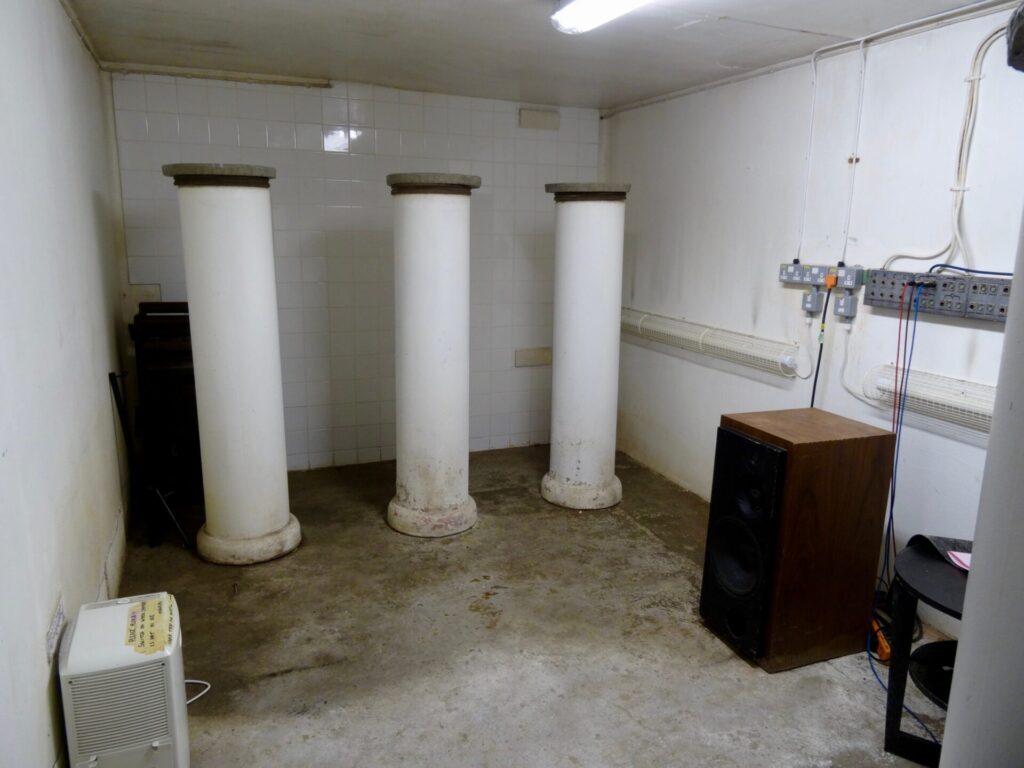
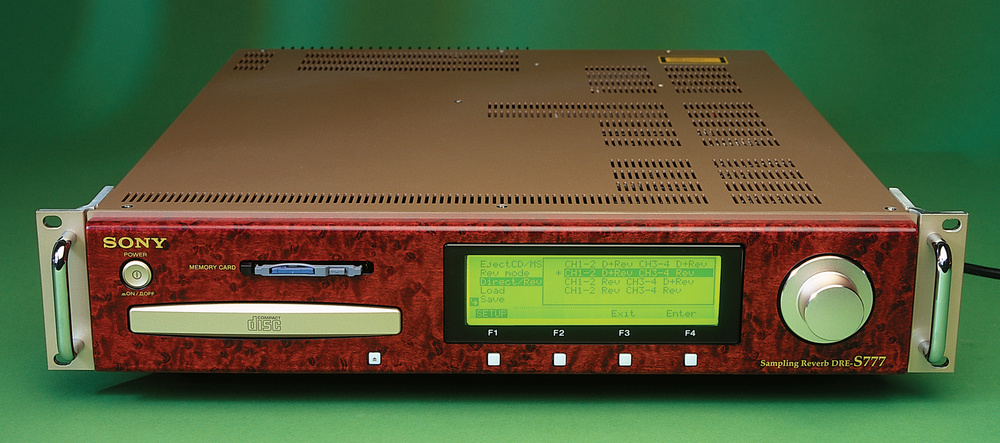

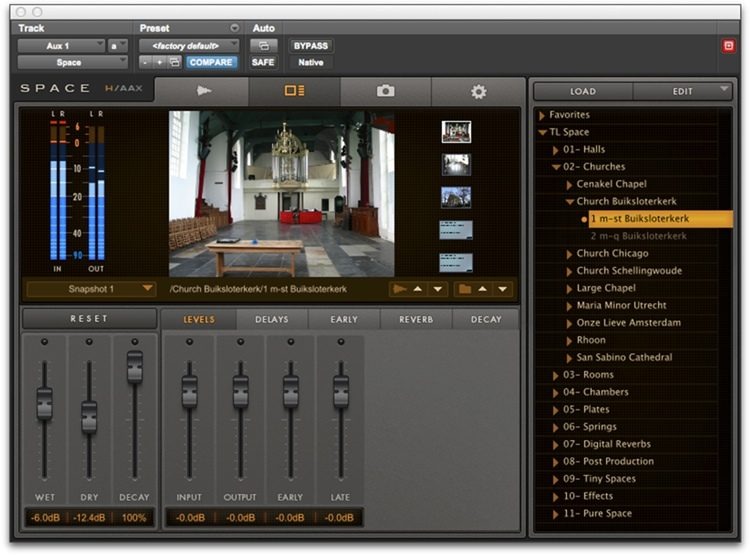
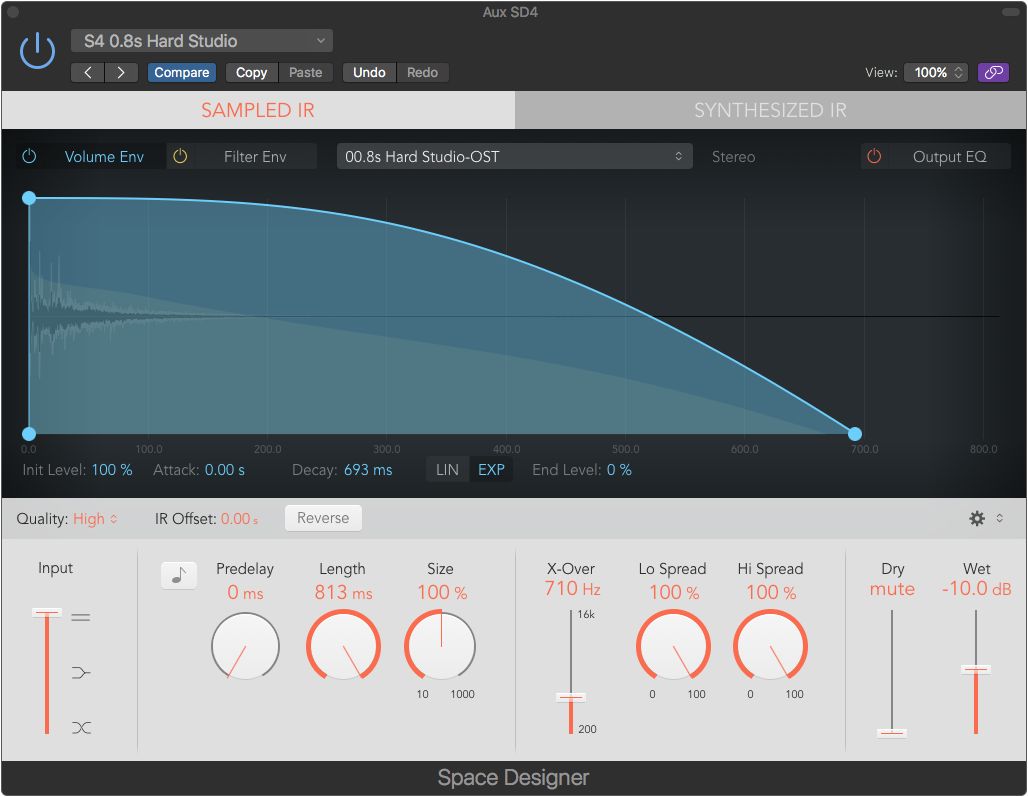
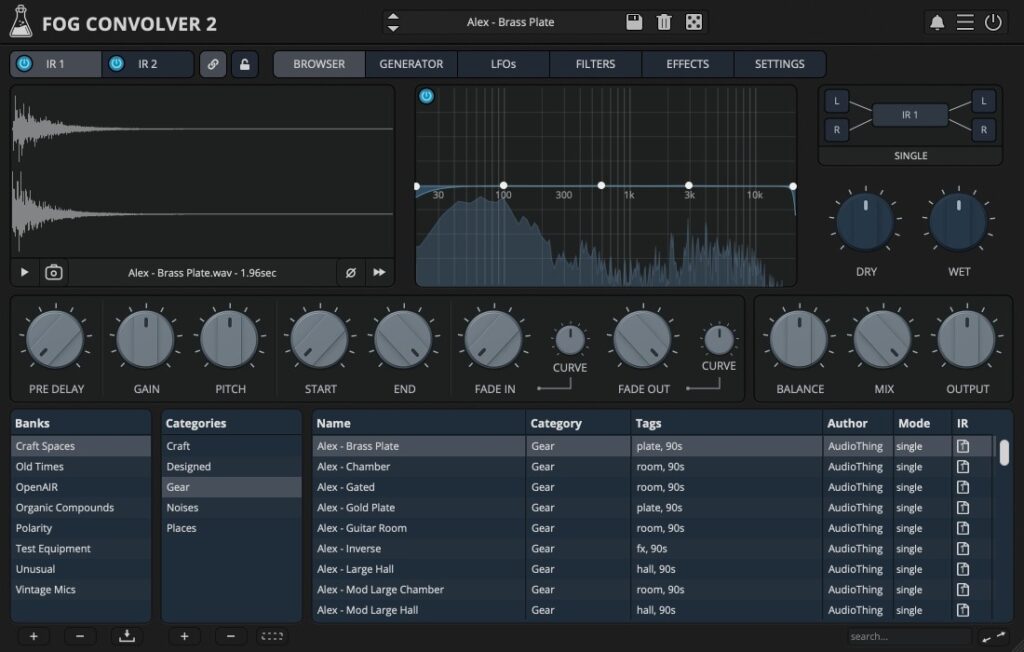

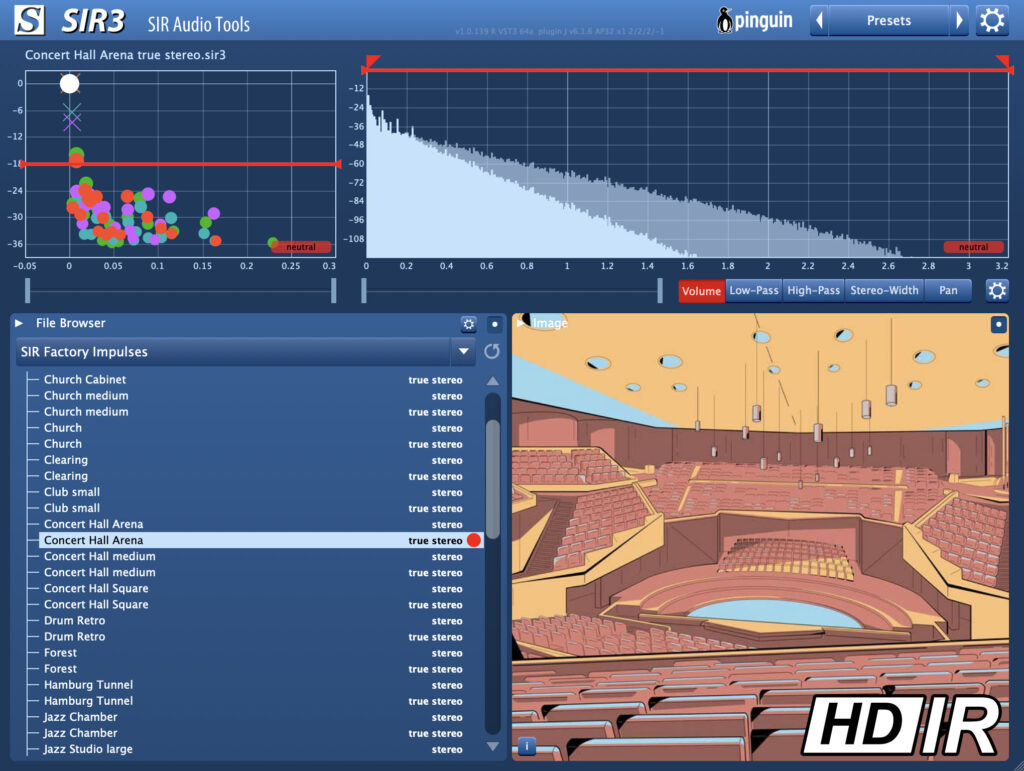
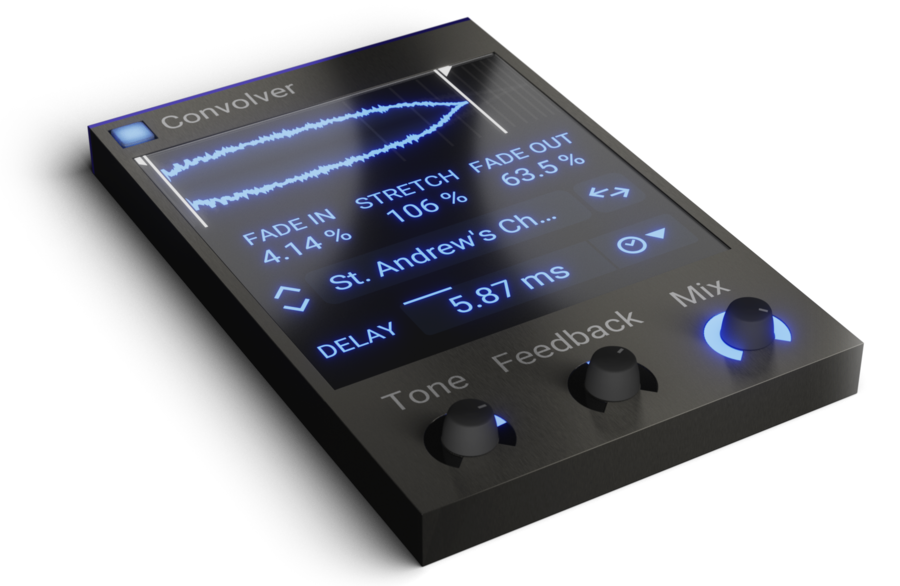
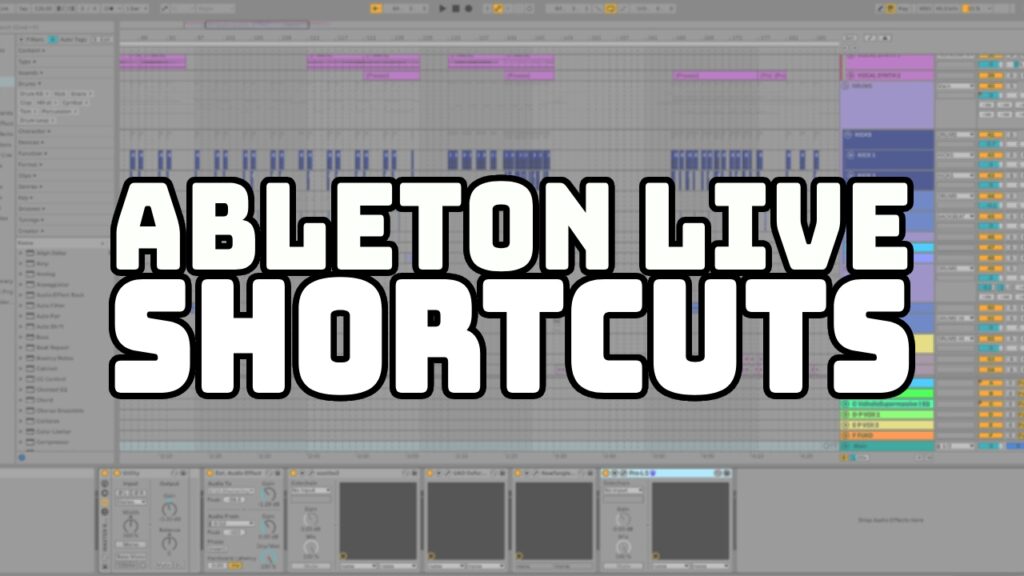
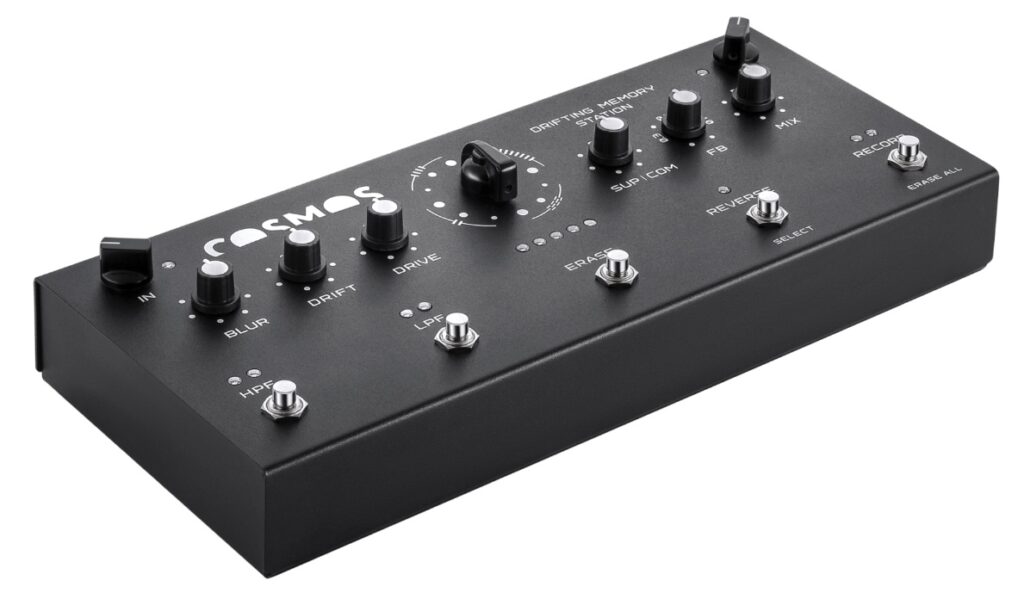
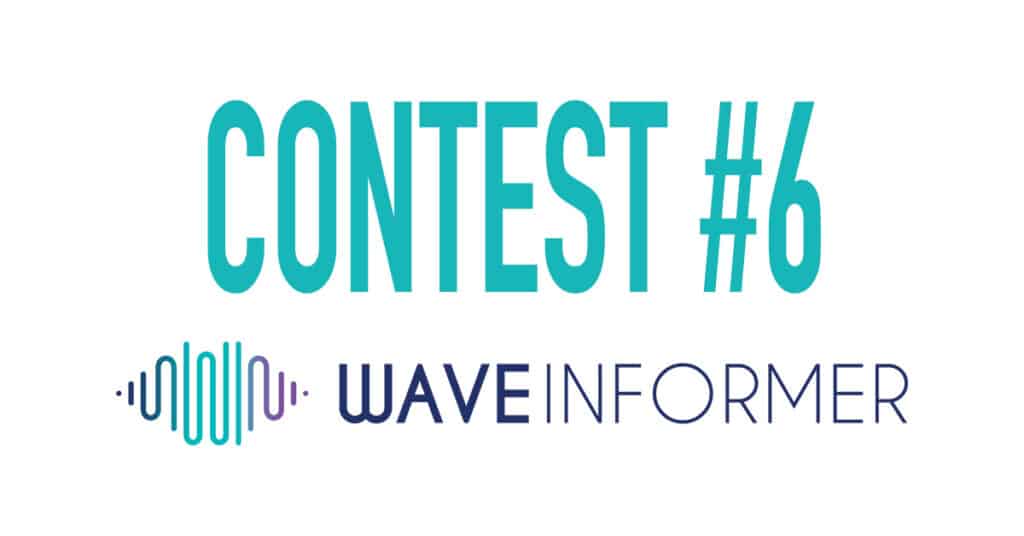
2 Comments
Comments are closed.